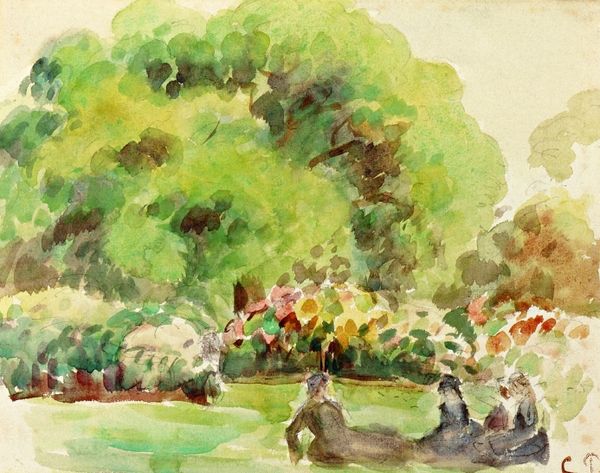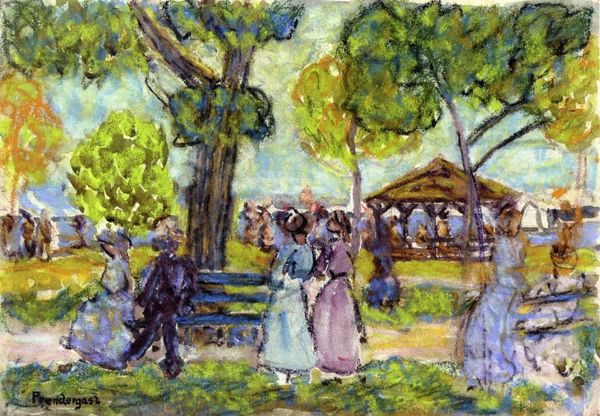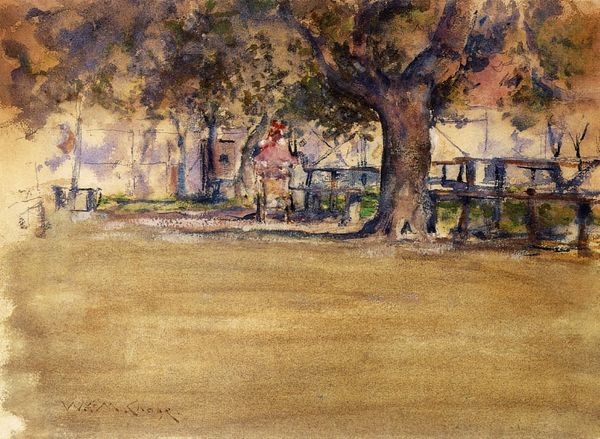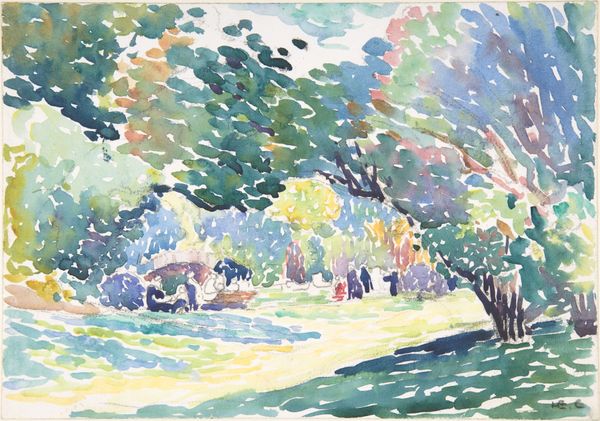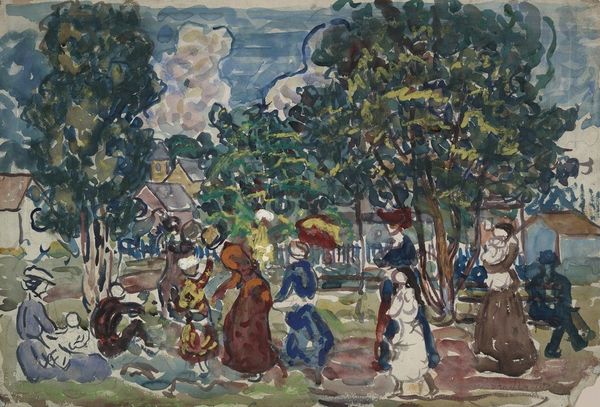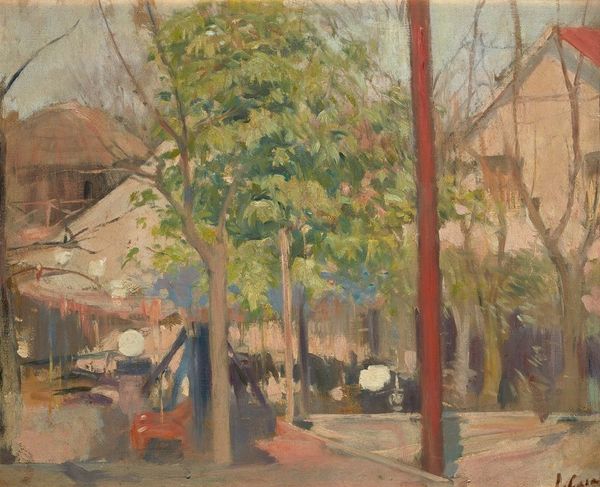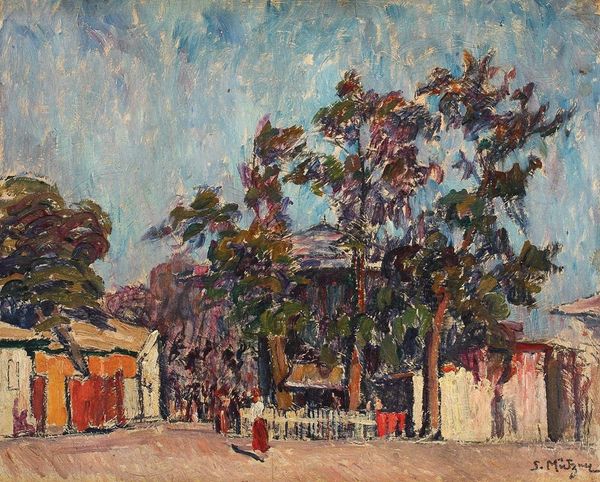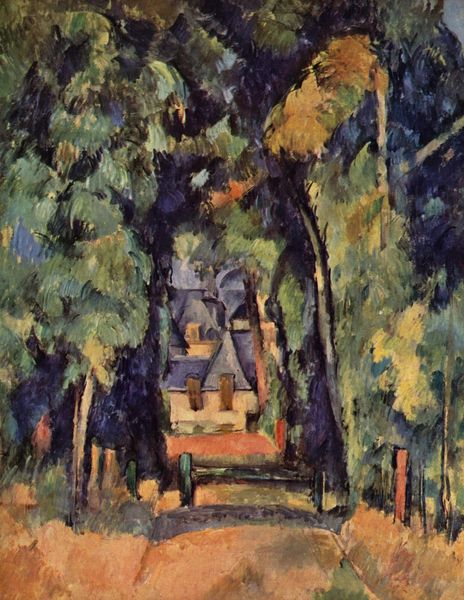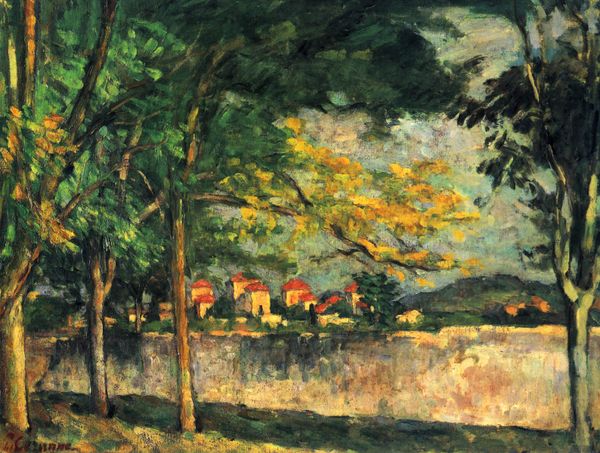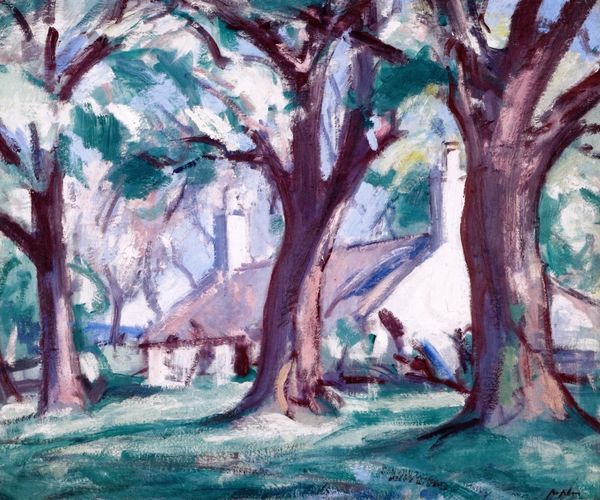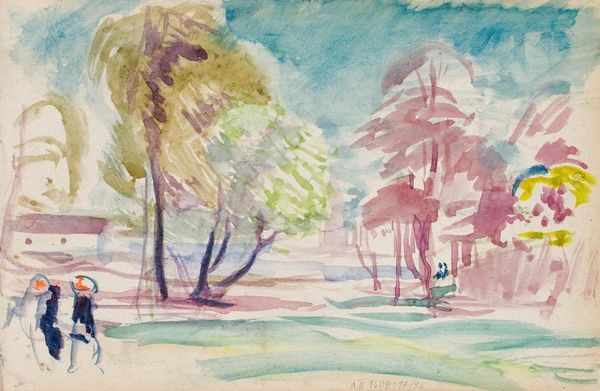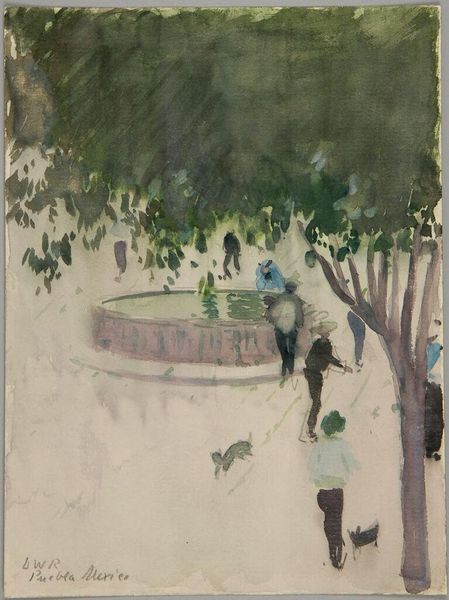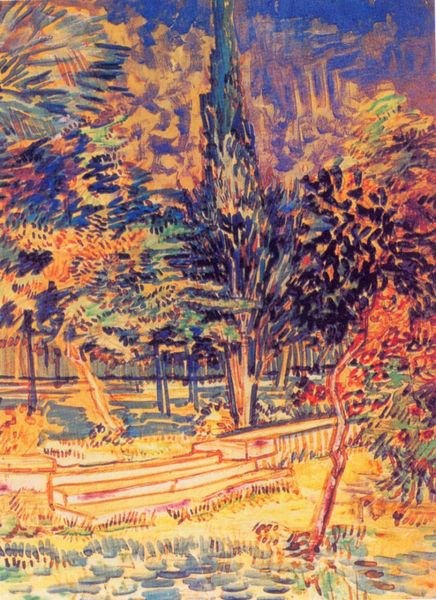
Copyright: Alexander Khvostenko-Khvostov,Fair Use
Editor: Here we have Alexander Khvostenko-Khvostov's set decoration for Smetana's opera *The Bartered Bride*, created in 1937. It looks to me like oil or tempera on canvas, depicting a village scene with a wonderful festive, folk feeling. What stands out to you in terms of its symbolic language? Curator: The entire scene vibrates with a specific kind of nostalgia. Notice how the loose brushstrokes and vibrant colors, while seemingly joyful, hint at a deeper yearning for a rural past. Does the architecture strike you as stage-like, rather than realistically rendered? Editor: Yes, definitely! It has this almost dreamlike quality, like a memory being recalled, imperfect and slightly idealized. What about the use of specific colors, do you think that connects to that nostalgia? Curator: Absolutely. The predominance of earthy greens and browns, offset by those brilliant blues and whites, recalls a traditional agrarian life. It’s an appeal to the viewer's inherent, perhaps even subconscious, connection to nature and community, which would especially resonate in the turbulent times of the late 1930s. But tell me, how do you respond to the somewhat blurred figures in the scene? Editor: I think they contribute to that feeling of a memory, figures fading slightly, almost as if they are secondary to the location itself. The emphasis isn't on individual identity, but on a collective sense of place. Curator: Precisely! It speaks to a longing for communal harmony, the characters representative of the 'folk' celebrated in the opera itself, imbued with that particularly potent symbolic charge. We are left with the impression that it represents a sort of idyllic world in theater, accessible only through art. Editor: It’s fascinating how the stage design manages to convey so much beyond just setting a scene for an opera. I'm left pondering about what aspects of that imagined community would be recognizable today. Curator: And it prompts a reflection on what endures—and what transforms—within our collective visual memory, doesn't it?
Comments
No comments
Be the first to comment and join the conversation on the ultimate creative platform.
